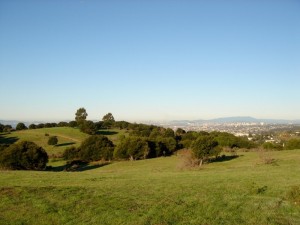The Zoo’s expansion plans would occupy and fence off the highest part of the western section of Knowland Park. This area abuts neighborhoods on the south side, and has traditionally been freely accessible to park visitors. The expansion area would become inaccessible, except by paid admission and under Zoo control. The expansion also would disrupt the natural contours of the hills with multi-story structures, including a gondola with 60 foot towers. It would disrupt the native plant and animal life, and cause light and noise pollution visible for great distances.
The loss of this area of rare beauty would be too great a price to pay for an expanded Zoo.
The Knowland Park Coalition is deeply concerned about the planned Oakland Zoo theme park development into the largest remaining parcel of freely accessible public open space owned by the city. Our concerns include:
The primary reason for the loss of species and variation within species is loss of habitat. The proposed theme park will result in a loss of more than 50 acres of wildlife habitat, an ironic result of a development that purports to be about advancing conservation.
Principle #4 of the Oakland General Plan’s Open Space, Conservation and Recreation Element (principles which were established to guide management of all open space resources within the city) states that there should be no net loss of open space within the city when buildings and related facilities are constructed. The planned zoo expansion would result in a net loss of freely accessible public open space. Even if additional open space is identified, there is simply nothing comparable to Knowland Park in terms of its special natural resources.
The Oakland General Plan’s Open Space, Conservation and Recreation Element specifically states (p. 5-46) that “the substantial portion of Knowland Park above the zoo and picnic grounds…is to remain in its natural state and be managed for resource conservation and fire hazard reduction.” We believe that conversion of this property to zoo grounds, restaurant, gift shop, veterinary hospital, etc. does not conform with the General Plan.
The Zoo Master Plan was approved with a Mitigated Negative Declaration in 1998. We believe that a full Environmental Impact Report is required in order to appraise the current situation, because conditions have changed since the Initial Study was completed more than a decade ago and the plans have changed dramatically.
Policy CO-9.1 of Oakland General Plan’s Open Space, Conservation and Recreation Element calls for protection of rare, endangered and threatened species. The federally threatened Alameda Whipsnake has been identified on the site and a number of locally rare plants are present there.
Policy OS-10.1 of Oakland General Plan’s Open Space, Conservation and Recreation Element calls for protecting the character of existing scenic views. The existing open space on which the zoo proposes to expand is a geographically and visually unique parcel, featuring rolling topography and panoramic hill and Bay views that provide a glimpse into what this area must have been like before settlement. We believe the expansion should be kept off knolls and below the ridgeline to the west so these views are protected.

 Follow
Follow
